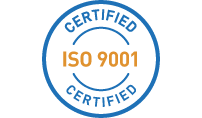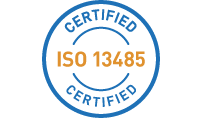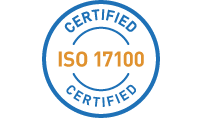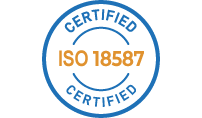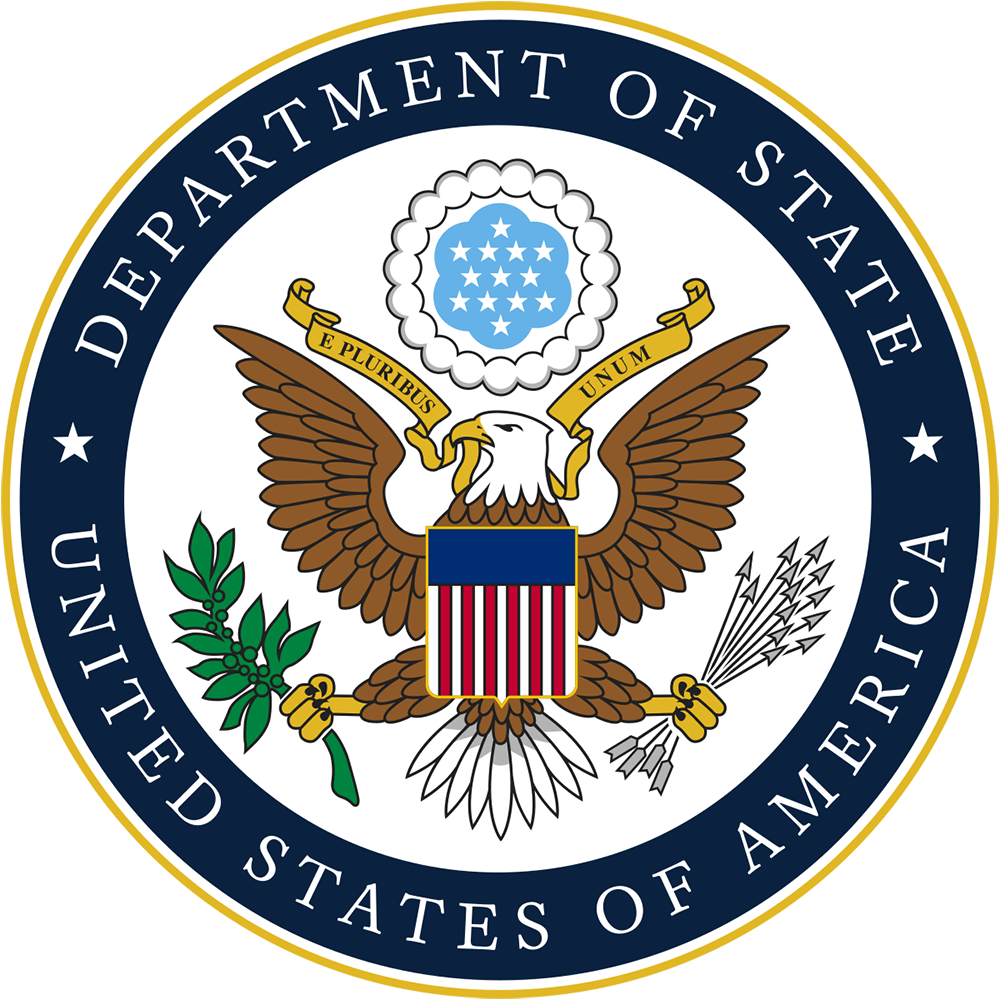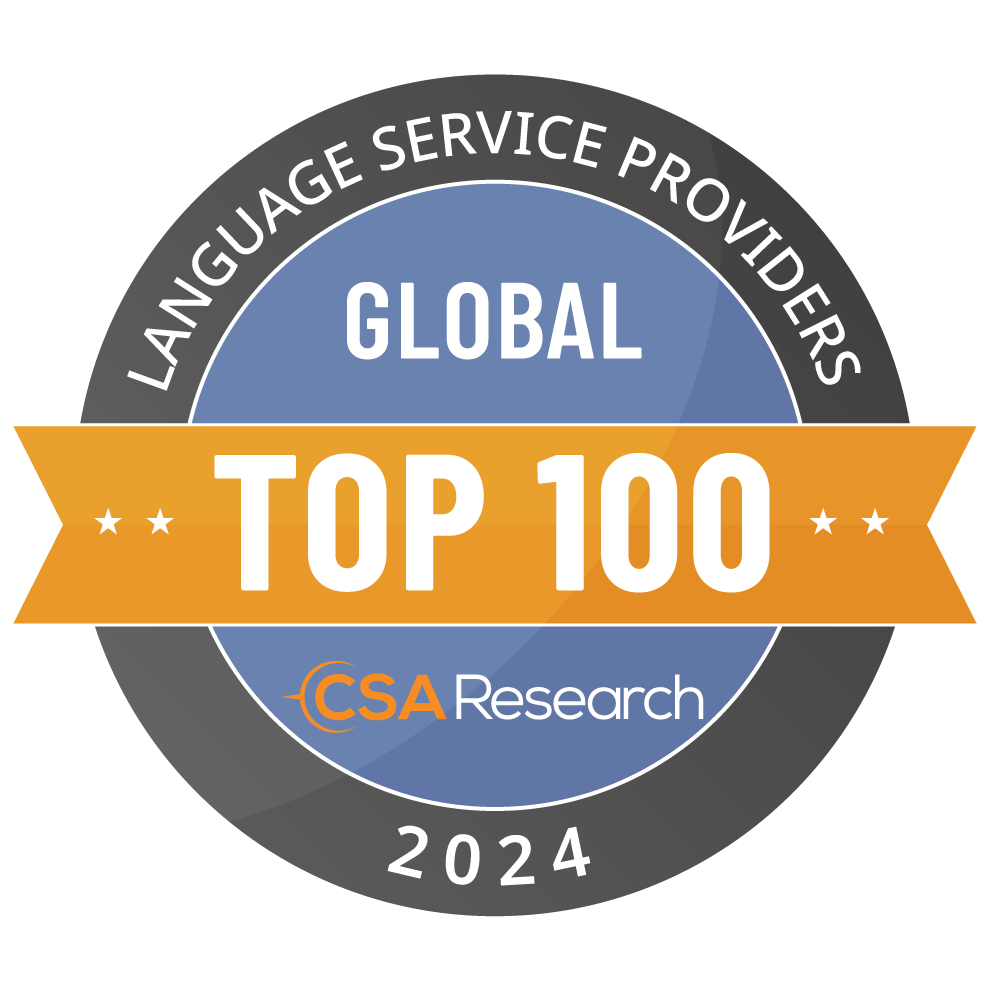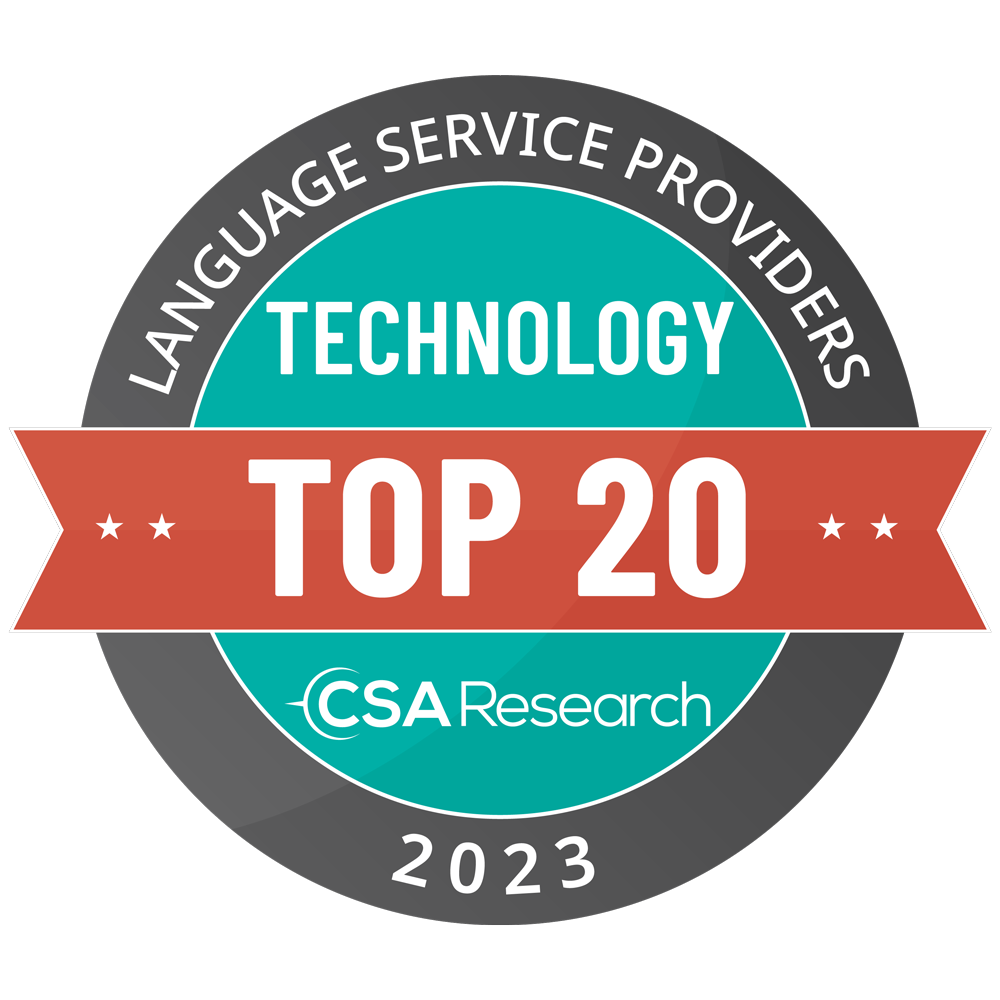
ORQA unifies leading machine translation engines and large language models with MediaLocate’s translation management system in a single control interface. It enables tailored pipelines per content type, combining AI steps with expert review to meet your quality bar and timelines.
ORQA integrates contextual information from glossaries, style guides, translation memories, and references, so translations are on-brand from the first pass. Its AI quality estimation scores each segment and flags issues, enabling dynamic routing to automated AI post-editing, human review, or instant approval. Translators and reviewers receive guidance via MQM quality reports, while advanced reporting capabilities turn performance data into actionable insights.
The result: faster turnaround, less rework, and consistent, brand-true content across markets.
Apex Communicator
- Even the best linguists are human. Without automated checks and gates, errors can slip through, creating legal, financial, or brand risk. And no two humans are alike, so even when quality is good, consistency is difficult to maintain at scale.
- AI agents bridge the gap. By flagging issues humans might miss and focusing their attention on the right places, AI-augmented translation raises the minimum quality you can count on. Context engineering ensures consistency in terminology and style, reducing variance and enabling teams to achieve on-brand output more reliably.
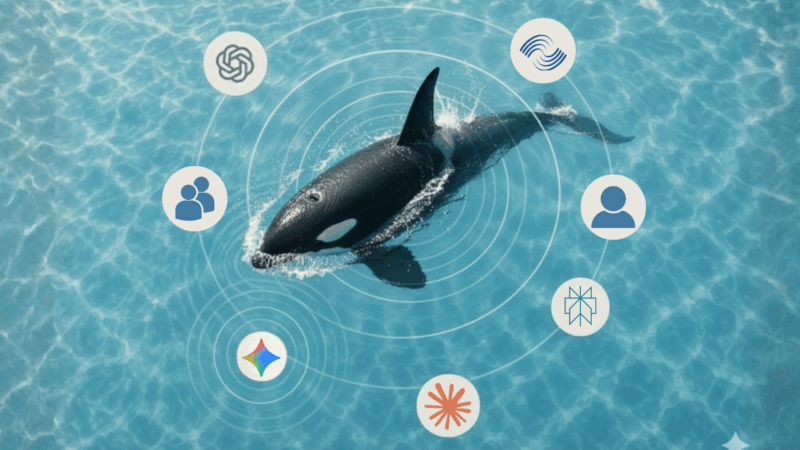
Orchestrated Quality
- ORQA unifies OpenAI, Google, DeepL, Adobe, and your existing stack. It evaluates the best-fit MT/AI for each language and content type to build customized pipelines.
- ORQA can estimate quality, propose improvements, auto-apply edits, and route content to expert review. Human reviewers validate, and the system learns from their feedback—so quality rises with every pass.
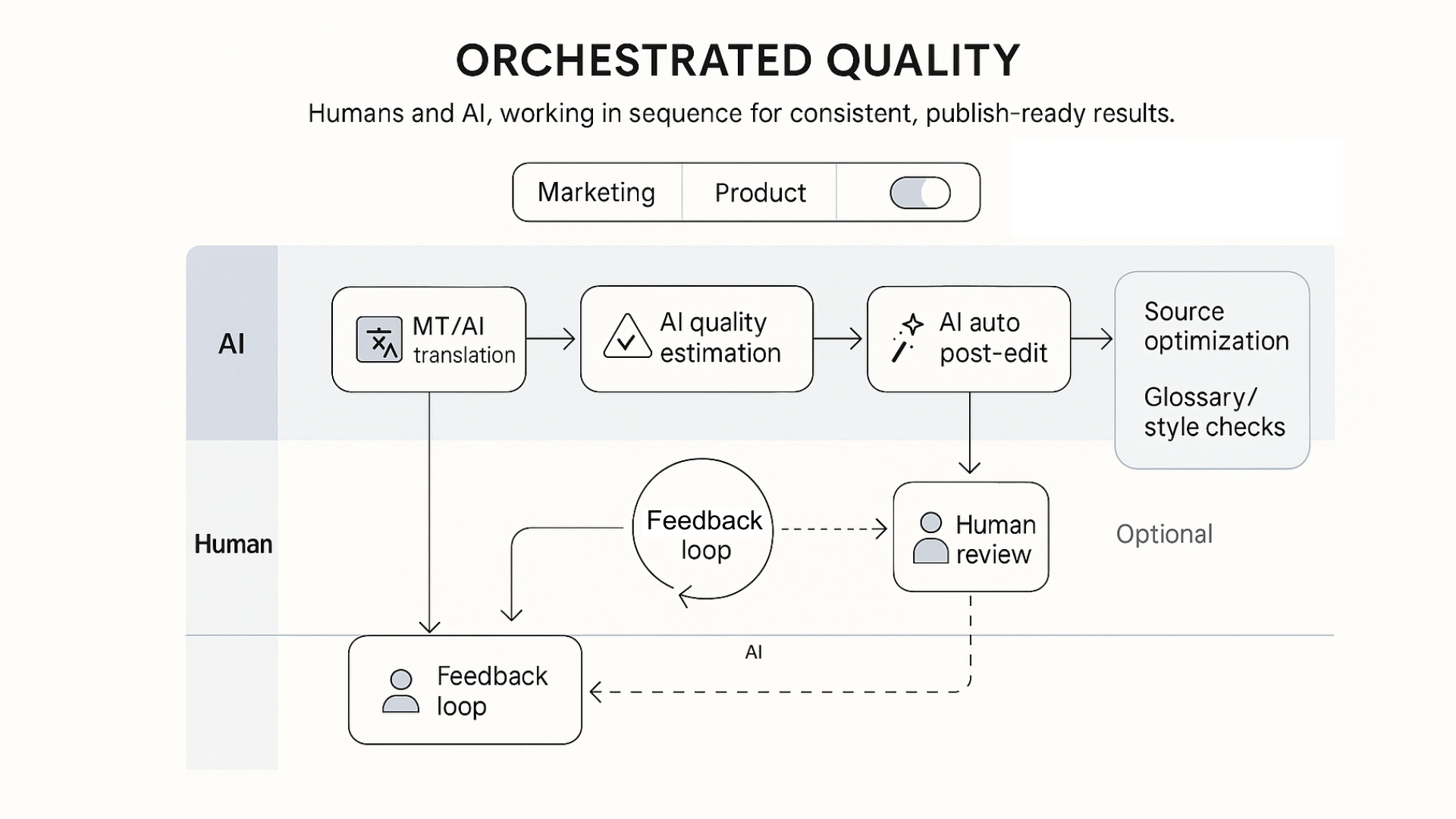
Signal Over Noise
- ORQA turns quality assessments into actionable scores and issue tags. High-scoring translations are auto-approved, borderline content is sent to AI post-editing, and sensitive material is routed to expert review, focusing human effort where it matters.
- Translators allocate their time to the work that requires them the most, thereby boosting productivity and accelerating delivery.
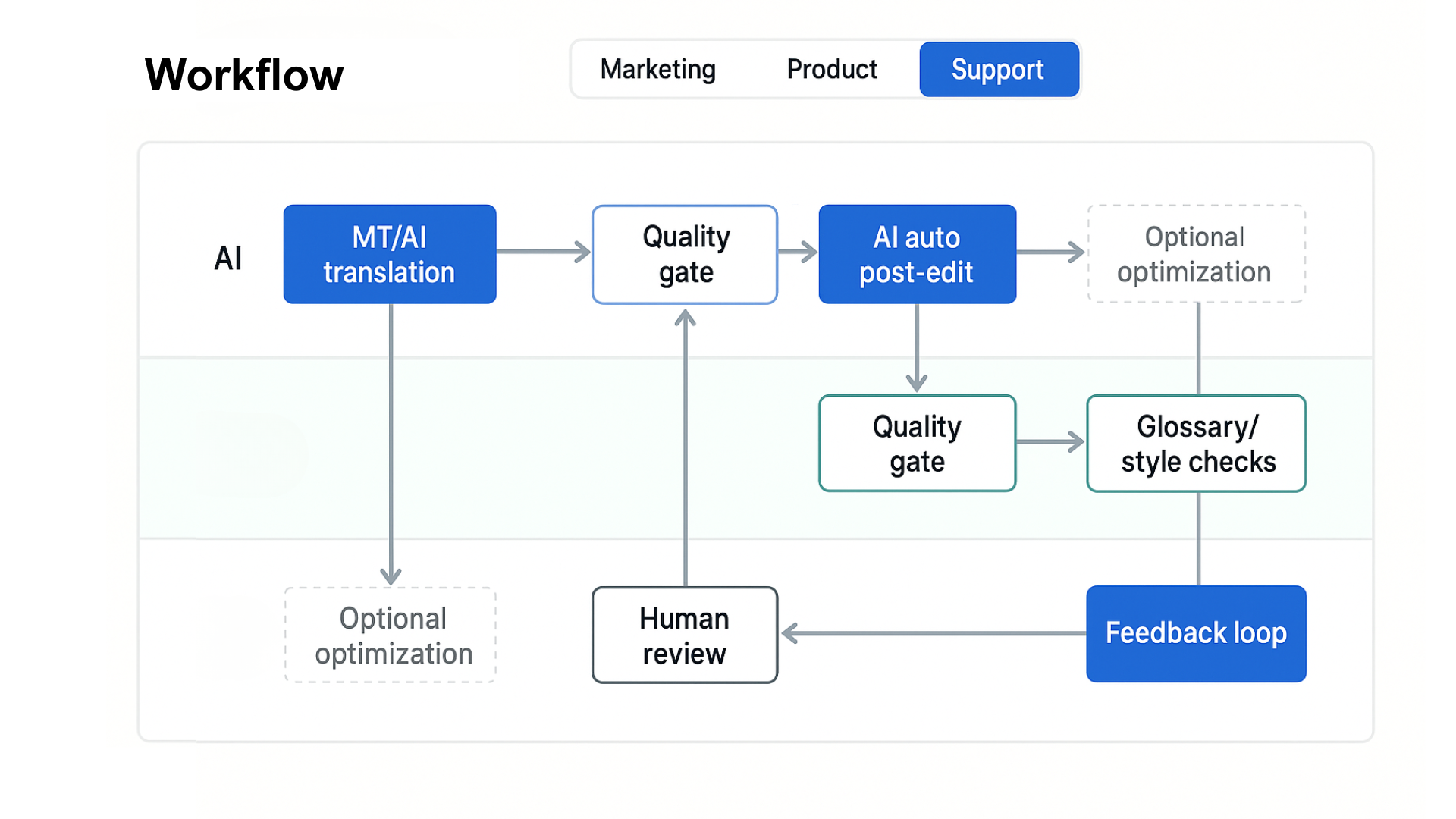
Call And Response
- ORQA works with your glossaries, style guides, past translations, and reference materials. It ingests and composes that context for each engine or model, so outputs align with your tone, terminology, and intent from the first pass.
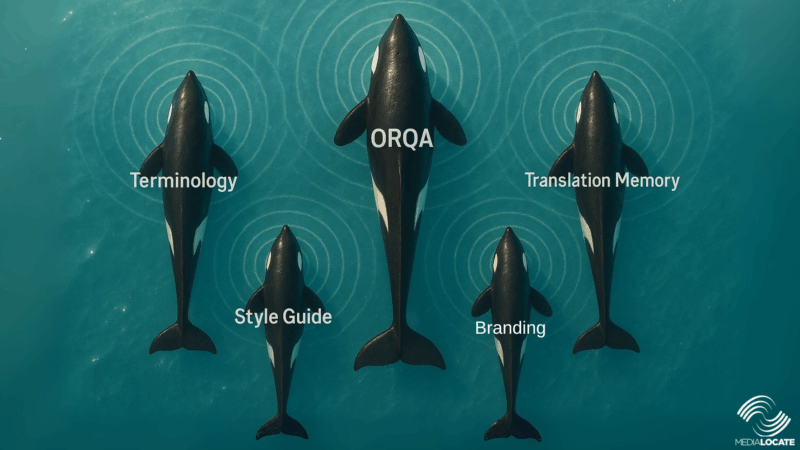
Traditional MT vs ORQA
Feature | MT | ORQA |
Control & Integration | ||
Central control interface over MT engines and LLMs | ||
Engines & Model Coverage | ||
Google machine translation | ||
DeepL machine translation | ||
OpenAI automatic translation | ||
Anthropic automatic translation | ||
Orchestration & Workflow | ||
Model routing (best-fit MT/LLM) | ||
Tailored pipelines per content type | ||
AI automatic post-editing | ||
Human expert review | ||
Auto-approve high-quality translations | ||
Context & Consistency | ||
Context engineering (style guides, TMs) | ||
Brand voice enforced on first pass | ||
Terminology enforced on first pass | ||
Automatic correction of format issues | ||
Quality, Measurement & Learning | ||
AI quality estimation scoring (0–100) | ||
MQM quality reports with actionable guidance | ||
Feedback loop improves performance over time | ||
Outcomes | ||
Raised floor and higher ceiling for quality | ||
Cost efficiency via targeted human effort | ||
Faster turnaround | ||
CHART YOUR COURSE
AI is now a core partner in localization, estimating quality, generating reports, fixing issues, and suggesting improvements alongside expert linguists. ORQA lets you design the right mix of AI agents and human steps to reach your quality bar—every time.

